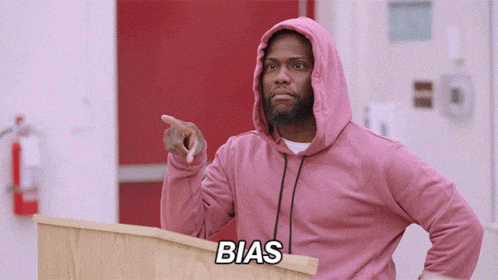We’ve all had that moment. A conversation with a friend or family member where you decide that there’s something you want. Maybe you’ve just moved house and realised that you don’t own a hoover (as was the case with me), or perhaps it’s something simpler like deciding you want takeaway for dinner? Whatever the case, the next time you go online and an ad for that very thing pops up, you’re left asking yourself the question: Is someone listening to my conversations?
Short answer: no. Long answer: kind of, but not in the way that you think.
Let’s use Dave as a demographic example for our case study. Dave has just seen an ad for a new game that he’s very interested in, the weird thing is, he’d only heard of the game earlier that day from a conversation he had with a co-worker, so how did it know to show him the ad now? The best example to illustrate this is Facebook. A number of years ago a project called Sharelab attempted to detail all the different ways that Facebook gathers data and it begins with four main areas.
Data Gathering
Profile and Account
Dave is a man in his late 20’s and he’s just signed up to Facebook. In his profile he has filled out several pieces of information such as his gender, age, date of birth and family members. On top of this he has detailed his previous education, including his study of history at university, and his current job as a product manager. All this information is used to build a user profile for Dave and people like him as well as allow for associations to be made between Dave and others.
Actions & Behaviour
Dave begins to scroll through Facebook and he comes across a few posts about the historical accuracy of video games that he likes or comments on and some that he even shares. Eventually he joins a group dedicated to the discussion of this and gets recommendations for other pages and events where he can meet up with like-minded people. This all then feeds into action and content stores which can be used to predict the kind of decisions Dave is likely to make in the future, what kind of content he already enjoys, and what similar areas he may be interested in.
Digital Footprint
As Dave is making his way across Facebook other information is being gathered. What time does he log in?, does he do it on his phone or his computer?, where is he when he logs in?. This is collected primarily through cookies on websites. This also helps to further flesh out his user profile by determining times when actions might be taken and his preferred device. It also feeds into location data and can place Dave into a general Locale.
Third Party
Finally, we come to those times when Dave isn’t on Facebook but information can still be gathered depending on what he is doing. Using companies affiliated with Facebook such as when he puts a post on Instagram or plays on his Meta Quest headset, he is providing further action, profile, and digital footprint Data to Facebook. There can also be information gathered from Third Party partners such as analytics, marketing, and other advertising services, that are accepted when he visits other websites.

The image above shows the culmination of the research done by Sharelabs and illustrates how Dave can take some rather trivial actions and still give an algorithm a lot of data to work with. This can seem quite intimidating and indeed several times companies such as Facebook have come under fire for the way in which they collect user information and their subsequent handling of it. The most notable example of which is the Cambridge analytica scandal in which significant personal information was taken not just from those who agreed to be surveyed but their entire Facebook friends list. Despite this, there are ongoing efforts to increase privacy and reduce the potentially predatory ways in which companies gather and use your data.
In 2018, the UK introduced a new version of the Data Protection Act (DPA) which superseded the previous one from 1998. This new DPA supplemented the General Data Protection Regulation and gave users the right to be informed of how the government and other organisations make use of your data, the ability to update incorrect information, have data erased, as well as stop the processing of your data, amongst other things. This year, Google introduced further changes to its consent policies from 2015 including the necessity for sites to ask permission before enabling any method of tracking on-site behaviour. Laws and policies such as these have led to greater privacy and user control over data and reflect the overall commitment to fostering an environment that is mutually beneficial to both consumers and marketers.
Processing and Targeting
Going back to Dave, the algorithm now has a plethora of information that it has gathered and has been subsequently stored into several categories. The next step is the processing, which we’ve already touched on briefly. Marketing requires several factors to be successful, you want to hit the right person, with the right ad, at the right time and the processing of data is what achieves this.
The hypothetical product in question is a new mediaeval game releasing in the UK in the next month with its key selling point being its immersive, sword-based combat. With what we know about Dave already, we know that he is likely a good choice of customer for this game. He has an interest in the subject matter as informed by the groups and pages he has visited on Facebook as well as his educational background. He is in the correct age and gender demographic for gaming and we know he has an interest because of his use of an Oculus headset. Finally, we know where he’s based because of location data gathered from cookies, when he’s available based on his login times, and roughly how much he’s likely to earn based on his employment details.
All this information comes together to inform the algorithm that Dave would be interested in the new game as well as when best to serve him the ads that he is most likely to engage with.
This was just the specific method that Facebook uses but lots of digital platforms will gather information in some way or another and to varying degrees. Hopefully that gives you a good idea of how ads can be so detailed in their targeting, using data that you may not have even been aware was shared. But this still leaves us with a mystery: Why did Dave only see the ad after he had spoken about it with his coworker? To answer that we have to shift away from algorithms and into the realm of Psychology.
Biases in Marketing
In 1994, a man named Terry Mullen wrote a letter to a newspaper in Minnesota in which he described something he had dubbed the Baader-Meinhof phenomenon. He explains that he had spoken to a friend about the notorious German terrorist group Baader-Meinhof and the following day that friend had called him to tell him about a news story he’d seen in the newspaper regarding that same group. Later down the line, a linguistics professor coined the term ‘frequency illusion’ to describe the same effect.

The frequency illusion is a form of cognitive bias in which people are more likely to notice a product, word, or idea if they have recently been introduced to it. This is primarily due to two factors. The first factor is selective attention and is a situation in which the subject unconsciously filters what they perceive to be distracting or useless information whilst focusing on what they deem important. What this appears as in practice, using Dave as our example, could be a situation in which an ad for the game had actually been shown to him before but because he did not have prior knowledge of it, he simply ignored it and scrolled past.
The second factor is confirmation Bias, in which subjects are more likely to seek evidence that confirms their existing beliefs and sometimes even overlook contrary evidence. For Dave, once made aware of the game and having it at the forefront of his mind, the ad suddenly jumps out at him and because he has concerns about being listened to he takes this as evidence for that theory
It’s also entirely possible however, that this was just a coincidence. For those with less experience in the industry it can seem like something more nefarious but after working in the industry myself it’s easier to see the inner workings and understand that you’re only just seeing ads because the marketing for the game has only just started or a myriad of other reasons such as budget, audience expansion, new keywords etc.
Final Thoughts
There are concerns about data and privacy in the modern day that are still being addressed both through laws and company policies and with technology still progressing and the rise of AI, these will come even further to the forefront. I hope I’ve managed to highlight just how vast the flow of information is for many sites and how this can create a surprisingly accurate demographic profile of a person just through certain actions and account information. Going back to our original question: Is someone listening to your conversations? No, because ultimately they don’t need to (unless you’re on some kind of watchlist).

Leave a Reply